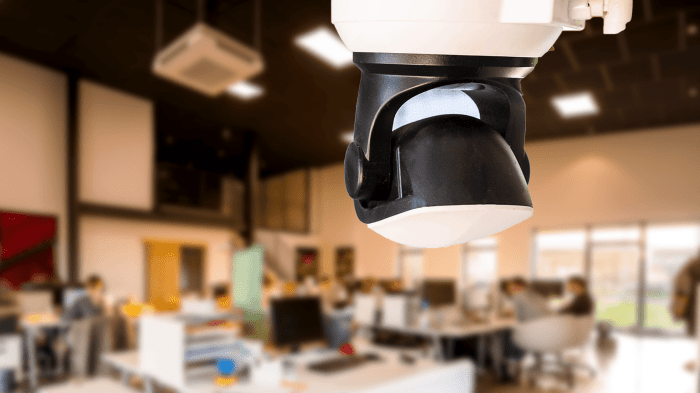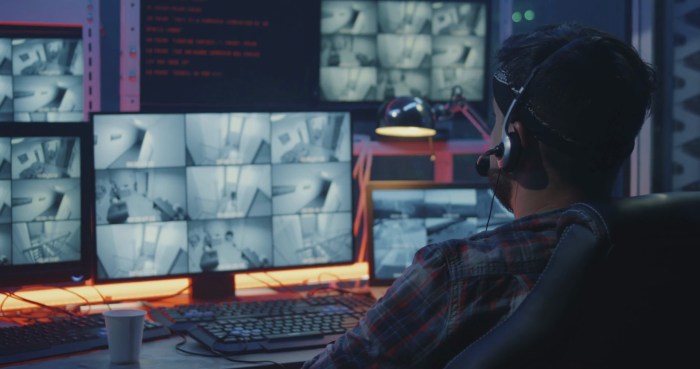Cameras with WiFi connectivity could be hacked and turned into spy cams—it’s a chilling reality. Think about it: that seemingly innocent baby monitor, your security camera, even that smart doorbell—all vulnerable to becoming tools for unwanted surveillance. Hackers exploit weak passwords, outdated firmware, and security flaws to gain access, transforming your home tech into a potential invasion of privacy. This isn’t just a theoretical threat; real-world examples demonstrate the devastating consequences, highlighting the urgent need for better security practices.
From easily guessed passwords to sophisticated malware, the methods used to compromise these devices are varied and constantly evolving. We’ll delve into the specific vulnerabilities, the techniques used by hackers, and, most importantly, the steps you can take to protect yourself and your family. We’ll explore the legal and ethical gray areas surrounding this increasingly prevalent issue, leaving you with a clear understanding of the risks and how to mitigate them.
Security Risks of Wi-Fi Enabled Cameras
The convenience of remotely monitoring your home or business with Wi-Fi enabled cameras comes at a price: increased vulnerability to hacking. These seemingly innocuous devices, often lacking robust security features, represent a significant entry point for malicious actors seeking access to your personal data and even your physical space. Understanding these risks is crucial for protecting yourself and your loved ones.
Common Vulnerabilities in Wi-Fi Enabled Cameras
Many Wi-Fi cameras share common security weaknesses. These include default passwords that are easily guessed or found online, weak encryption protocols that can be easily cracked, and insufficient authentication mechanisms. Outdated firmware, failing to implement regular software updates, leaves cameras vulnerable to known exploits. Furthermore, many cameras lack robust access control features, making it simple for hackers to gain unauthorized access. A lack of secure communication channels also exposes transmitted data to interception.
Hackers employ various techniques to compromise Wi-Fi cameras. Brute-force attacks, where hackers systematically try different password combinations, are a common tactic, especially against devices with weak or default passwords. Man-in-the-middle attacks intercept communication between the camera and the user’s device, allowing hackers to steal credentials and monitor activity. Exploiting known vulnerabilities in the camera’s firmware is another frequent method. Once access is gained, hackers can often remotely control the camera, viewing live feeds, accessing recordings, and even using the camera’s microphone for eavesdropping. Furthermore, some cameras are vulnerable to SQL injection attacks, allowing hackers to manipulate the camera’s database.
Potential Consequences of a Successful Hack
The consequences of a successful camera hack can be severe. Data breaches are a primary concern, with hackers potentially accessing sensitive video and audio recordings, compromising personal privacy and potentially revealing confidential information. Privacy violations are a direct result, with unauthorized access to private spaces and activities. Beyond privacy, compromised cameras can be used as part of larger botnets for launching distributed denial-of-service (DDoS) attacks or as part of surveillance networks. In extreme cases, hackers could use the camera to monitor individuals for malicious purposes.
Comparison of Security Features Across Brands, Cameras with wifi connectivity could be hacked and turned into spy cams
The security features of Wi-Fi cameras vary significantly across brands. Some manufacturers prioritize security, incorporating strong encryption protocols, regular firmware updates, and robust authentication mechanisms. Others lag behind, offering minimal security features, increasing the risk of compromise. It’s crucial to research a camera’s security features before purchasing to ensure it meets your security needs.
Security Feature Comparison Table
| Brand | Encryption Protocol | Firmware Updates | Two-Factor Authentication | Vulnerabilities (Known) |
|---|---|---|---|---|
| Brand A | AES-256 | Regular (monthly) | Yes | Minor vulnerabilities patched regularly |
| Brand B | AES-128 | Irregular | No | Several known vulnerabilities, some unpatched |
| Brand C | WEP (Outdated) | Infrequent | No | Numerous significant vulnerabilities |
| Brand D | AES-128 | Regular (quarterly) | Yes | Few known vulnerabilities, actively addressed |
Legal and Ethical Implications: Cameras With Wifi Connectivity Could Be Hacked And Turned Into Spy Cams
The rise of Wi-Fi enabled cameras has brought about a complex interplay of legal and ethical considerations, particularly concerning their potential misuse for unauthorized surveillance. The ease of access and potential for hacking these devices raises serious questions about individual privacy and the responsibility of both manufacturers and users. Understanding the legal frameworks and ethical guidelines surrounding these technologies is crucial to mitigating the risks.
Many jurisdictions have laws in place to address the unauthorized use of cameras for surveillance. These laws often fall under broader statutes concerning privacy violations, trespassing, and unlawful interception of communications. For instance, in the United States, various state and federal laws, including wiretap statutes and privacy acts, could be applicable depending on the specifics of the situation. Similarly, the European Union’s General Data Protection Regulation (GDPR) imposes strict rules on the collection and processing of personal data, including data captured by surveillance cameras. These laws often require consent for recording individuals, limit the scope of surveillance, and impose penalties for violations. The specific regulations vary widely by location, making it essential to understand the applicable laws in your jurisdiction.
Ethical Considerations and Privacy Violations
The ethical implications of using Wi-Fi cameras extend beyond the legal framework. Even if the use of a camera is technically legal, it doesn’t necessarily make it ethical. Deploying a camera in a location where individuals have a reasonable expectation of privacy, such as a bedroom or bathroom, raises serious ethical concerns, regardless of whether the camera is hacked or legally obtained. The potential for psychological harm from feeling constantly monitored, even without knowledge, is a significant ethical consideration. The principle of informed consent is paramount; individuals should be aware of the presence of surveillance and its purpose. The ethical use of Wi-Fi cameras requires a balance between security needs and respect for individual privacy.
Legal Ramifications: Hacked vs. Legally Obtained Cameras
The legal ramifications differ significantly between using a hacked camera and a legally obtained camera for surveillance. Using a legally obtained camera for surveillance, while still subject to ethical and potentially legal constraints (depending on location and context), carries a different level of legal risk than using a hacked device. Using a hacked camera is a crime in itself, encompassing offences such as unauthorized access to computer systems, data theft, and potentially even violations of privacy laws. The penalties for such crimes can be severe, including hefty fines and imprisonment. Conversely, using a legally obtained camera might still lead to legal repercussions if used improperly, such as violating privacy laws or consent regulations, but the penalties would generally be less severe than those associated with hacking and unauthorized access.
Misuse of Illegally Obtained Camera Footage
The misuse of camera footage obtained through illegal means can have far-reaching consequences. Distribution of such footage without consent constitutes a significant privacy violation and can lead to criminal charges. Furthermore, the footage could be used for blackmail, harassment, or other malicious purposes, resulting in severe emotional distress and potential financial harm for the victim. The unauthorized use of such footage can also damage the reputation and credibility of those involved. The long-term impacts of this misuse can be devastating and long-lasting.
Legal and Ethical Implications Summary Table
| Scenario | Legal Implications | Ethical Implications | Potential Consequences |
|---|---|---|---|
| Using a legally obtained camera without consent | Potential violation of privacy laws, depending on jurisdiction and context. | Violation of privacy and informed consent. | Fines, lawsuits, reputational damage. |
| Using a hacked camera for surveillance | Criminal charges for hacking, unauthorized access, and privacy violations. | Serious breach of privacy, trust, and ethical conduct. | Imprisonment, hefty fines, reputational ruin. |
| Distributing illegally obtained footage | Criminal charges for distribution of private information and potential further offenses depending on the use of the footage. | Severe breach of trust and ethical standards; potential for causing significant harm. | Imprisonment, substantial fines, civil lawsuits. |
| Using a legally obtained camera with consent | Generally legal, provided it complies with relevant laws and regulations. | Ethically sound, provided transparency and respect for privacy are maintained. | Minimal legal or ethical risk. |
In a world increasingly reliant on interconnected devices, the threat of hacked WiFi cameras is a serious one. Understanding the vulnerabilities, common attack methods, and protective measures is crucial for safeguarding your privacy and security. While the technology evolves, so too must our awareness and proactive approach to securing our homes and personal data. Don’t let your smart home become a spy’s playground – take control of your security today.
 Invest Tekno Berita Teknologi Terbaru
Invest Tekno Berita Teknologi Terbaru

